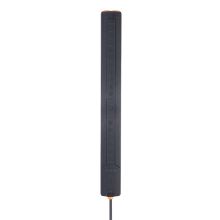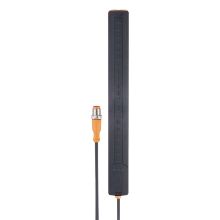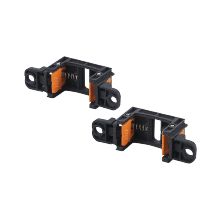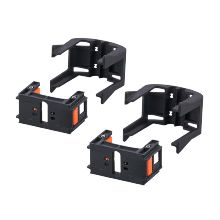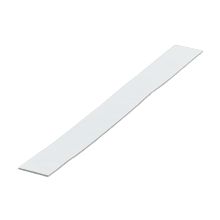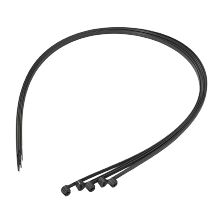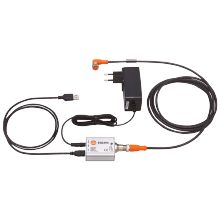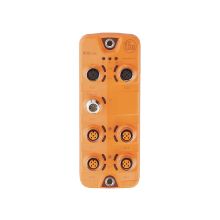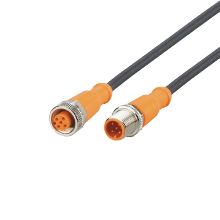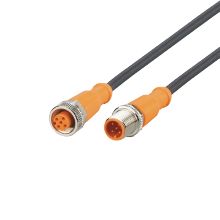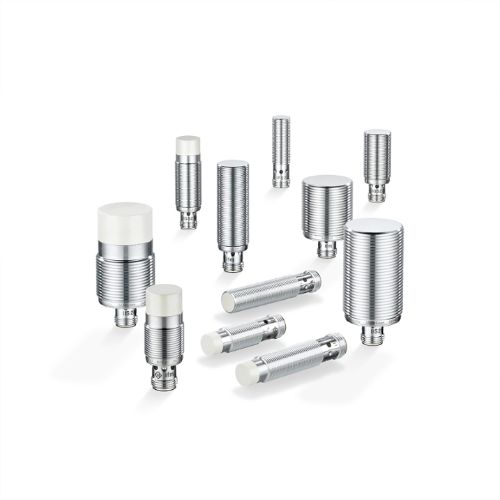KQ10 for continuous range monitoring of point levels
Three switch points with just one sensor
- Continuous level monitoring from outside the process
- No stress caused by the medium thanks to non-contact detection
- Three point level positions in one sensor
IO-Link:
- Deposits can be detected and signalled to improve quality of the process
- Several KQ10 units can be linked via IO-Link
Continuous monitoring of empty and overflow condition
The KQ10 for range monitoring can “see” through all non-metallic walls, to detect granulates or liquids without contact. Therefore, no maintenance is required. Process values of 0...100 % can continuously be transferred via IO-Link over the entire length of 250 mm without dead band. 20 LEDs display the real level inside the vessel directly at the sensor. If several KQ10 units are combined, the detection zone can be increased accordingly.
Three switch points with just one sensor
Up to three point levels can be monitored with just one sensor where normally three sensors would be needed – and this at the same time with continuous range monitoring. Switch points and other functions such as NC / NO, hysteresis or orientation and detection zone of the sensor can be set.
Point level and continuous level monitoring
As opposed to the conventional solution with two point level sensors each at the lower (empty) and upper end (overflow) of the tank, one single KQ10 comes with three switch points to indicate empty, full and overflow condition. This reduces the number of sensors and installation complexity. Moreover, it continuously measures levels in ranges of 250 mm and provides these, in addition to the switching states, as a percentage value via IO-Link. Slight deposits on the inner walls of the tank do not impair the level detection, and they can be signalled via the switching output or IO-Link if the threshold is exceeded. This permanent condition monitoring prevents unplanned production downtime.
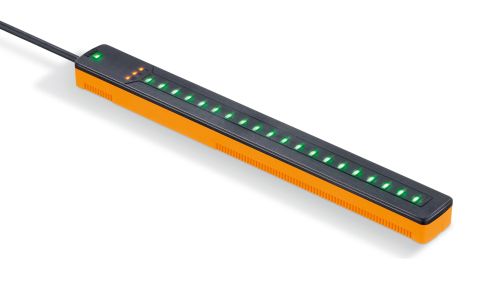
| Several point level sensors in one housing |
Measure outside the tank |
Continuous monitoring |
Independent of the medium |
| Much less mounting and wiring complexity despite a larger detection range |
No stress by the medium and no intervention or hole in the tank |
Precisely plan follow-up processes and quickly react to changes such as build-up |
Simply set the sensor to different media |
Small tanks
Industry
- Printers (glass, ceramics, 3D etc.)
- Plastics processing
Advantages
- No mechanical or chemical stress by the medium
- Exact level measurement along the whole sensor length
- No hole in the tank
- Predictive calculation – how much can I still produce?
Large tanks
Medium
- Liquids
- Granulates
Advantages
- Independent of the tank size
- Several sensors can be linked via IO-Link
- One KQ10 replaces several point level sensors for empty and overflow monitoring
- Increasing build-up is reliably detected and signalled
Bypasses / pipes
Medium
- Liquids
- Granulates
Advantages
- Simple mounting at bypasses
- Continuous monitoring even at very narrow pipes from a diameter of 10 mm
- Clearly visible LEDs indicate the level even at non-transparent pipes
Added value thanks to IO-Link
 |
Increase product and process quality Quality control starts as early as in the production process |
 |
Minimise downtimes Plan maintenance more precisely and increase plant efficiency |
 |
Make processes transparent Measured values become intelligent data |
 |
Increase flexibility Adaptability of the process for different media and formulations |
